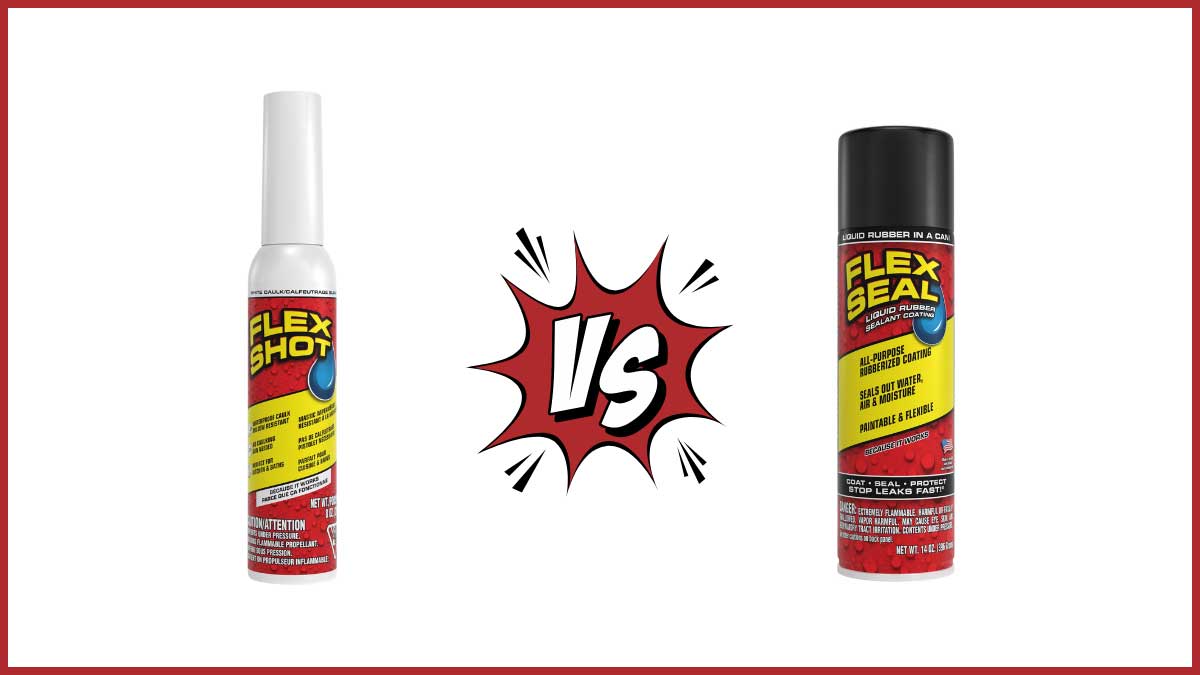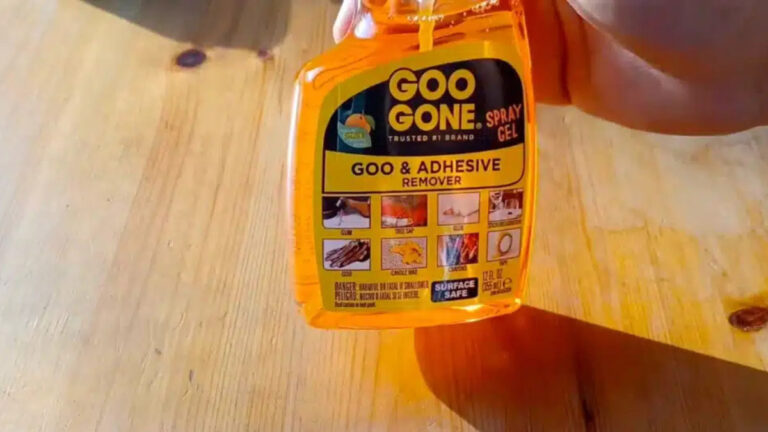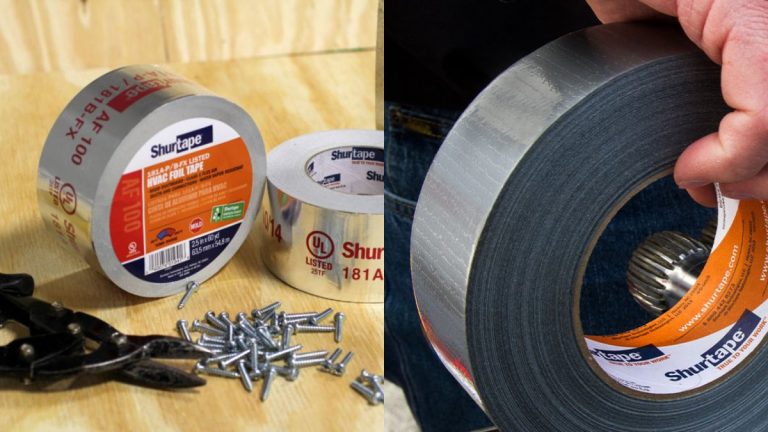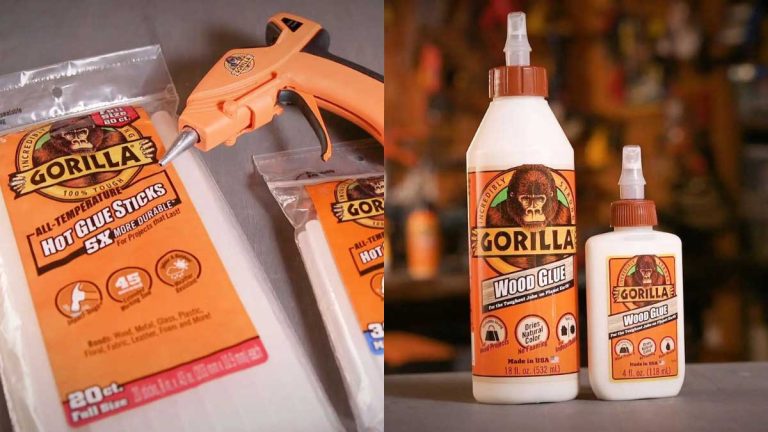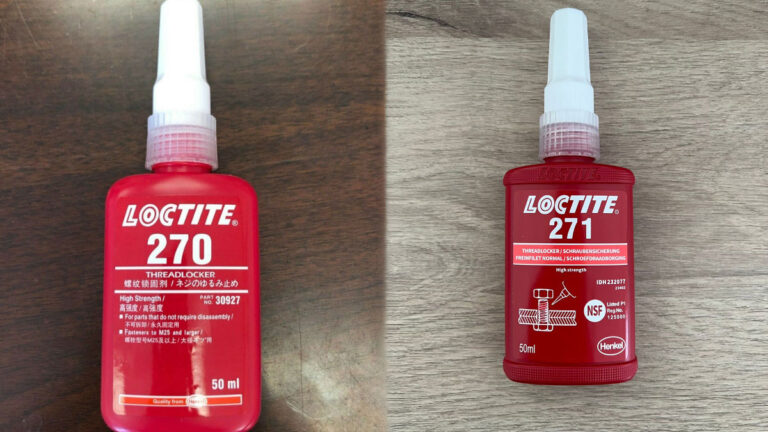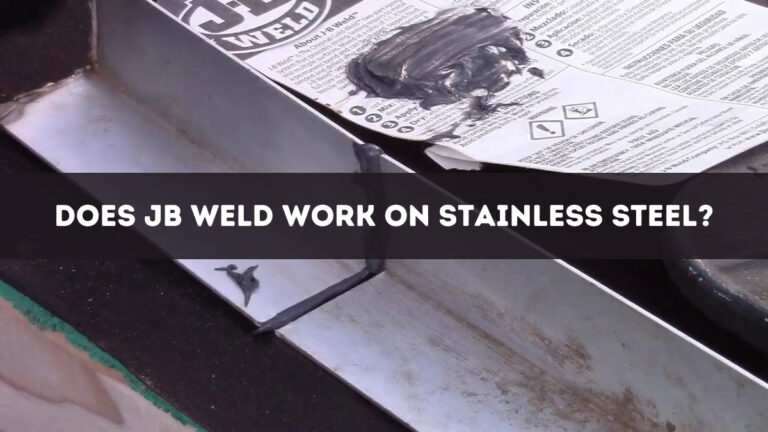Flex Shot vs Flex Seal: Which Sealant is Best for Your DIY Projects?
When you’re tackling home repairs or DIY projects, choosing the right sealing product can make all the difference. Two popular options on the market are Flex Shot and Flex Seal. Both promise to provide a durable, waterproof seal, but which one truly stands out?
Understanding the key differences between Flex Shot and Flex Seal can save you time, money, and frustration. Whether you’re sealing a leaky pipe, fixing a roof, or patching up a boat, knowing when to use each product will ensure you get the best results. Let’s jump into what sets these two apart and help you make an well-informed choice for your next project.
Key Takeaways
- Flex Shot and Flex Seal Overview: Flex Shot is a silicone-based rubber sealant, perfect for precise caulking tasks without a caulk gun, while Flex Seal is a rubberized sealing product available in spray and liquid forms.
- Best Use Cases: Flex Shot is ideal for small gaps, cracks, and traditional caulking jobs, especially in kitchens and bathrooms. Flex Seal is better suited for large surface areas and a variety of materials like metal, wood, and plastic.
- Performance and Durability: Both products offer long-lasting sealing solutions; however, Flex Shot is praised for its durability in humid environments, while Flex Seal is noted for its resistance to cracking and fading over time.
- Cost and Value: Both products are priced similarly, around $10 to $20 per unit. Flex Shot excels in delivering lasting durability for small, detailed projects, while Flex Seal offers versatility and ease of use for larger applications.
- User Feedback: Users appreciate the ease of use and effectiveness of both products, though multiple applications may be required for thorough sealing. Flex Shot is preferred for confined spaces, while Flex Seal is favored for broader surface areas.
Understanding Flex Shot and Flex Seal
Choosing the right product for home repairs or DIY projects requires understanding the essential differences between Flex Shot and Flex Seal.
What is Flex Shot?
- Composition: Flex Shot is a silicone-based rubber sealant.
- Usage: It’s useful for caulking, bonding, and sealing tasks without needing a caulk gun. Its thick formula makes it ideal for various sealing applications.
- Performance: It effectively seals holes and gaps. But, it might require multiple applications to ensure complete leak-proofing.
- Limitations: Flex Shot can’t be top-coated with paint. If you need to paint over it, you’ll have to remove it or cover it with a paintable caulk.
- Composition: Flex Seal is a rubberized sealing product, available in spray and liquid forms.
- Usage: It seals leaks, holes, and gaps in materials like metal, wood, and plastic.
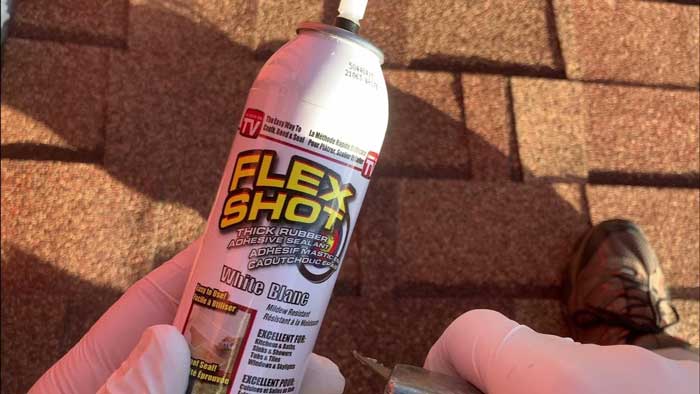
| Product | Composition | Usage | Performance | Limitations |
|---|---|---|---|---|
| Flex Shot | Silicone-based rubber sealant | Caulking, bonding, sealing without caulk gun | Effective for sealing holes and gaps, may need multiple applications | Cannot be painted over |
| Flex Seal | Rubberized sealing product | Sealing leaks, holes, gaps in metal, wood, plastic | Varies based on the application, can be applied to a wide range of materials | May need multiple coats for complete sealing |
Flex Shot and Flex Seal address different needs in home repair and DIY projects. Familiarize yourself with these products to make the best choice for your next project.
Key Differences Between Flex Shot and Flex Seal
Understanding the differences between Flex Shot and Flex Seal is crucial for making informed decisions in your home repair projects.
Composition and Application
- Flex Shot:
- Composition: Flex Shot is a silicone-based rubber sealant. This means it provides a durable, flexible, and waterproof barrier.
- Application: Flex Shot is designed for direct application from a tube. Used as a caulk, it’s suitable for sealing gaps and cracks in various surfaces like countertops, bathtubs, and sinks.
- Flex Seal:
- Composition: Flex Seal is a rubberized coating, differing from Flex Shot as it is not silicone-based.
- Application: Flex Seal comes in spray and liquid forms, making it ideal for larger surface areas. It can be applied to materials such as metal, wood, and fabric, forming a flexible, rubberized coating.
Best Use Cases
- Flex Shot:
- Small Gaps and Cracks: Best for sealing small gaps, joints, and cracks in confined spaces like kitchens and bathrooms. For example, sealing around a sink or bathtub.
- Traditional Caulking Jobs: Ideal for traditional caulking tasks where precision application is needed.
- Flex Seal:
- Larger Surface Areas: Perfect for covering large areas. For instance, sealing an entire roof or coating a metal pipe.
- Variety of Materials: Suitable for diverse materials, including metal, wood, and fabric, making it very versatile for outdoor use or on various fixtures.
| Feature | Flex Shot | Flex Seal |
|---|---|---|
| Composition | Silicone-based rubber sealant | Rubberized coating |
| Application Method | Direct from tube | Spray or liquid forms |
| Best For | Small gaps, cracks, and joints | Large surface areas |
| Materials | Countertops, bathtubs, sinks | Metal, wood, fabric |
Knowing these key differences helps you choose the right product for your specific needs. If you are sealing a small gap in a confined space, Flex Shot is your best option. For larger areas or varied materials, go for Flex Seal.
Performance Comparison
Choosing between Flex Shot and Flex Seal often depends on specific performance needs. Both products boast unique characteristics pivotal for various repair tasks.
Durability
- Flex Shot:
- Forms a tacky coating within 20 minutes
- Fully cures in 24 to 48 hours
- Withstands temperatures from -76°F to 350°F
- Lasts for years without drying, cracking, or fading
- Flex Seal:
- Dries to the touch within a few hours
- Fully cures in 24 hours
- Resistant to cracking and fading
Effectiveness on Different Surfaces
- Flex Shot:
- Ideal for small gaps and confined spaces
- Best for caulking tasks in kitchens, bathrooms, and around windows
- Super thick siliconized rubber adheres well, especially in humid environments
- Flex Seal:
- Suited for larger surface areas and varied materials
- Effective on metal, wood, plastic, and fabric
- Liquid rubber sealant can fill complex shapes and gaps
Ease of Use
- Flex Shot:
- No caulking gun required
- Push the nozzle for an even bead
- Designed for precision in tight spaces
- Flex Seal:
- Spray directly onto the surface
- Suitable for both spot repairs and extensive coverage
- Easy application on vertical and horizontal surfaces
| Feature | Flex Shot | Flex Seal |
|---|---|---|
| Curing Time | 24 to 48 hours (fully cured) | 24 hours (fully cured) |
| Temperature Range | -76°F to 350°F (-60°C to 176.7°C) | Varies depending on the base material |
| Application Method | No nozzle needed, precision | Spray can, ideal for large areas |
| Longevity | Years without fading or cracking | Resistant to cracking and fading |
| Surface Compatibility | Best for small gaps in kitchens, etc. | Metal, wood, plastic, fabric |
Understanding these factors ensures you select the right product for your specific repair needs.
Cost Analysis
Selecting the right sealing product impacts both your project’s effectiveness and budget. Here’s a detailed cost analysis of Flex Shot and Flex Seal.
Price Comparison
- Flex Shot: An 8 oz bottle of Flex Shot costs between $10 and $20. Prices vary by vendor and purchase quantity.
- Flex Seal: A 14 oz can of Flex Seal spray also prices from $10 to $20, depending on the retailer and type (e.g., spray or liquid).
Pricing Table
| Product | Size | Price Range |
|---|---|---|
| Flex Shot | 8 oz | $10 – $20 |
| Flex Seal | 14 oz | $10 – $20 |
Value for Money
To evaluate value for money, consider product longevity, application ease, and effectiveness:
-
Flex Shot:
- Longevity: Up to 30 years without fading, cracking, or deteriorating.
- Ease of Use: No need for a caulk gun, ideal for confined spaces.
- Effectiveness: Excellent at sealing small gaps and caulking tasks.
- Longevity: Varies with application, generally requires multiple coats.
- Ease of Use: Available in spray and liquid, covering larger areas with ease.
- Effectiveness: Suitable for waterproofing and sealing diverse materials but mixed reviews on durability.
Flex Shot excels in long-lasting durability and ease of use for detailed tasks. Flex Seal is versatile for broader applications, though its long-term performance varies. Evaluating your specific needs helps determine which product offers the best value for your projects.
User Reviews and Feedback
User reviews provide critical insights into the practical performance of Flex Shot and Flex Seal. Here’s a closer look at what users are saying:
Common Praises
Effectiveness as Sealants
- Flex Shot: Praised for sealing gaps and leaks effectively, Flex Shot users report success in tasks like fixing shower leaks and sealing container holes. Its caulk-like consistency makes it ideal for these detailed tasks.
- Flex Seal: Users commend its ability to seal leaks across various materials. It’s often highlighted for waterproofing, though multiple coats may be needed for optimal results.
Ease of Use
- Flex Shot: Users find Flex Shot easy to apply, especially in tight spaces. Its tube design and silicone-based formula allow precise application without extra tools.
- Flex Seal: Also easy to use, Flex Seal spray provides a quick application across larger areas. It’s versatile and can be sprayed onto various surfaces.
Durability
- Flex Shot: Known for its flexibility and strength, users often praise its ability to withstand various conditions without breaking down. It’s durable even in humid environments.
- Flex Seal: Reviews highlight Flex Seal’s ability to resist cracking and fading over time, making it a reliable choice for long-term repairs.
Common Complaints
Multiple Coats Required
- Flex Shot: Some users mention that Flex Shot needs multiple applications for thorough sealing, which can be time-consuming.
- Flex Seal: Similar feedback indicates that Flex Seal may require several layers to achieve full waterproofing, especially on larger surfaces.
Drying Time
- Flex Shot: Users note that while Flex Shot forms a tacky layer quickly, the full curing process can take up to 48 hours, delaying some projects.
- Flex Seal: Complaints about Flex Seal often focus on its drying time, which may vary based on environmental conditions, requiring patience for complete curing.
- Flex Shot: Some users find Flex Shot less effective for larger surface areas, preferring it for small, detailed jobs only.
- Flex Seal: Conversely, Flex Seal’s effectiveness can be limited in small, confined spaces where a more controlled application is necessary.
| Product | Strengths | Weaknesses |
|---|---|---|
| Flex Shot | Effective for details, easy in tight spaces, highly durable | Multiple coats often needed, slower curing time |
| Flex Seal | Versatile, effective on various surfaces, resists cracking | Requires multiple layers, variable drying time |
When choosing between Flex Shot and Flex Seal, consider the specific needs of your project. Flex Shot excels in detailed tasks, small gaps, and confined spaces, while Flex Seal’s versatility makes it suitable for larger, more varied applications.
Conclusion
Choosing between Flex Shot and Flex Seal boils down to your specific project needs. Flex Shot excels in detailed tasks and small gaps, making it perfect for kitchens and bathrooms. Its silicone-based formula ensures long-lasting durability without cracking or fading.
On the other hand, Flex Seal’s versatility shines through for larger surface areas and various materials. Whether you’re sealing a leaky roof or patching a boat, its rubberized formula offers robust waterproofing capabilities.
Consider the scope and material of your project to make an well-informed choice. Both products have their strengths and limitations, but understanding these can save you time, money, and frustration in the long run.
Frequently Asked Questions
Is Flex Seal and Flex Shot the same?
Flex Seal is a sprayable liquid rubber, while Flex Shot is a caulking rubber sealant. Both products can stop leaks and fill cracks, but their use depends on the specific project requirements.
How long does it take for Flex Shot to cure?
Flex Shot forms a tacky coating within 20 minutes and fully cures in 24 to 48 hours, depending on temperature and humidity.
Can you put Flex Seal over Flex Shot?
Flex Seal spray can cover Flex Shot but may not adhere well. It’s recommended to use Flex Shot for caulking projects due to its durability.
What does Flex Shot do?
Flex Shot is ideal for caulking, bonding, and sealing small gaps without a caulk gun. It’s effective for detailed tasks in confined spaces like kitchens and bathrooms.
Can Flex Shot be removed?
Uncured Flex Shot can be removed with a dry cloth or paper towel and isopropyl alcohol if needed. Cured Flex Shot can be peeled away, possibly with the help of a razor blade or caulk removal tool.

